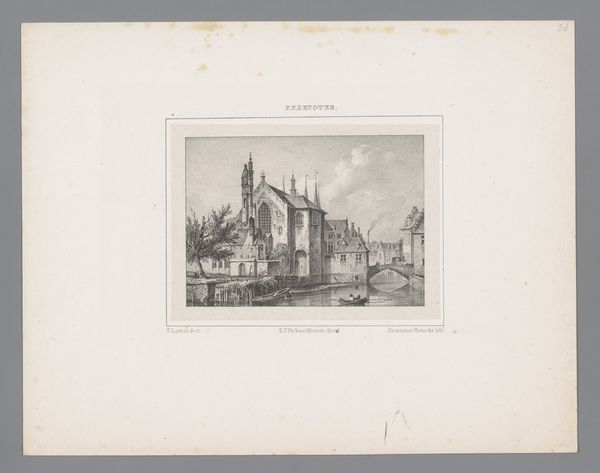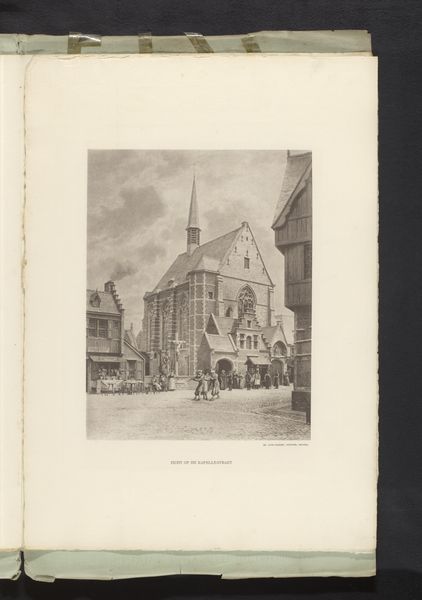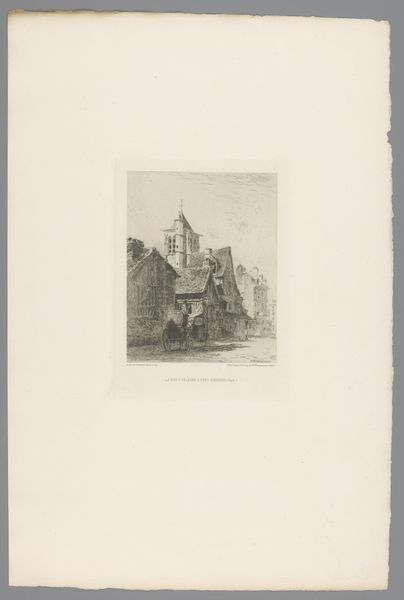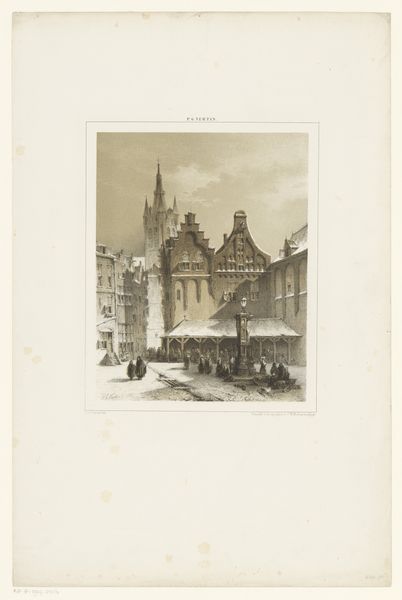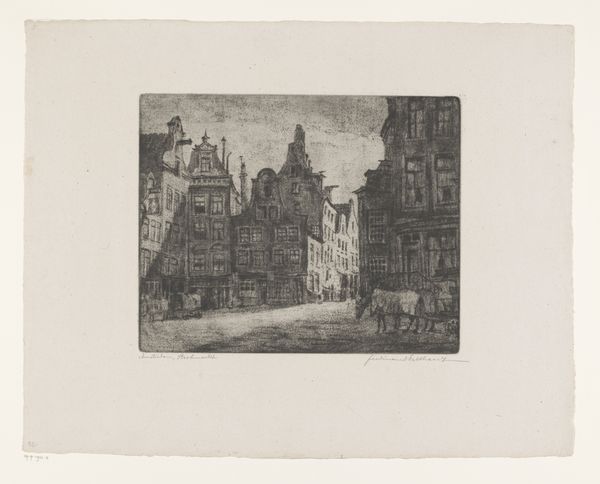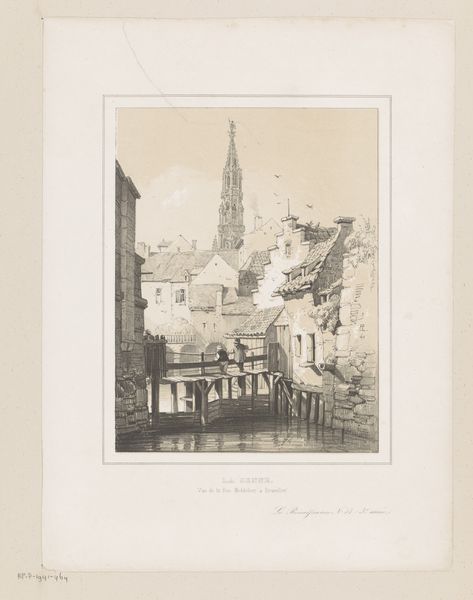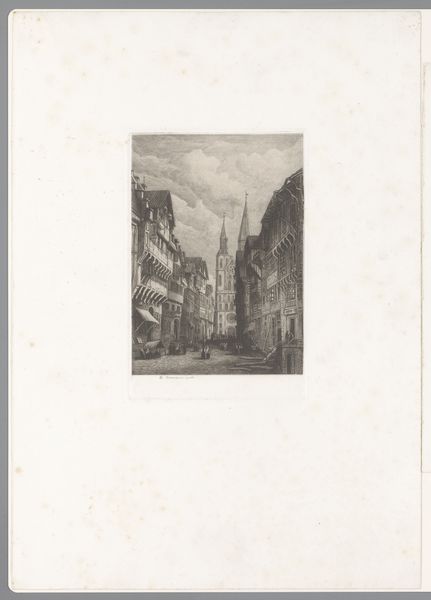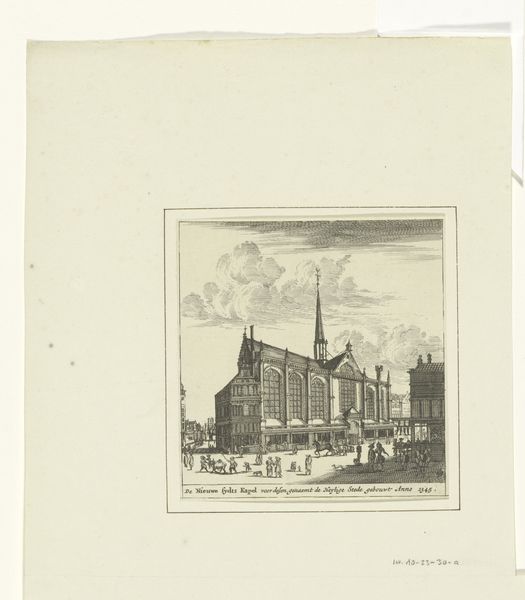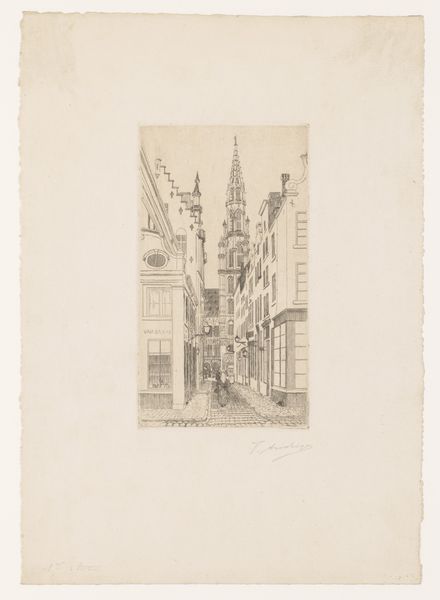
print, etching, paper
# print
#
etching
#
landscape
#
paper
#
romanticism
#
cityscape
Dimensions: height 248 mm, width 174 mm
Copyright: Rijks Museum: Open Domain
Curator: Let's consider this etching by Théodore Fourmois, "Stadsgezicht met kerk," placing its creation somewhere between 1824 and 1871. It’s currently held in the Rijksmuseum. What's your immediate response to this cityscape? Editor: My immediate reaction is a feeling of profound quietude and the sheer looming dominance of that church. You can almost hear the echoes of footsteps on the cobblestones, emphasizing the ordinary life happening in the shadow of established religious power. Curator: Indeed. Understanding that context, Romanticism was in full swing then. Fourmois uses the city as a tableau to reflect broader social dynamics and human scale amidst overwhelming structures. What narratives do you think he's trying to engage in the social sphere of that period? Editor: Considering it's an etching on paper, his choice of the medium itself suggests an intention toward accessibility, mass production and even a sort of democratisation of landscape art. It allows for wider dissemination, so this isn’t just an aesthetic experience, but a material object entering circulation. Curator: Absolutely. It underscores Romanticism’s dual focus on nature and the importance of community. Notice how he renders light—the somber hues add an introspective quality that aligns with artistic identity. There's a powerful tension between progress and preservation, a silent dialogue present in the streets themselves. What statements do you think the use of specific materials may evoke? Editor: The fine lines achieved through etching, combined with the subtle gradations of tone, suggest labor, care, and detail oriented work. It connects to ideas of value through labour, reflecting societal perspectives on artistic worth and even the church. Curator: That connection between labor, the church, and artistry resonates deeply, especially within the societal landscape. I think you have nailed the implications of the labor used to create it, within its historical moment. What we make from and of the piece speaks volumes about shifting cultural attitudes. Editor: Ultimately, its impact for me, rests not just in its aesthetics, but how that accessibility creates possibility. I found myself contemplating labor in contrast with what now feels like fleeting cultural conditions.
Comments
No comments
Be the first to comment and join the conversation on the ultimate creative platform.

